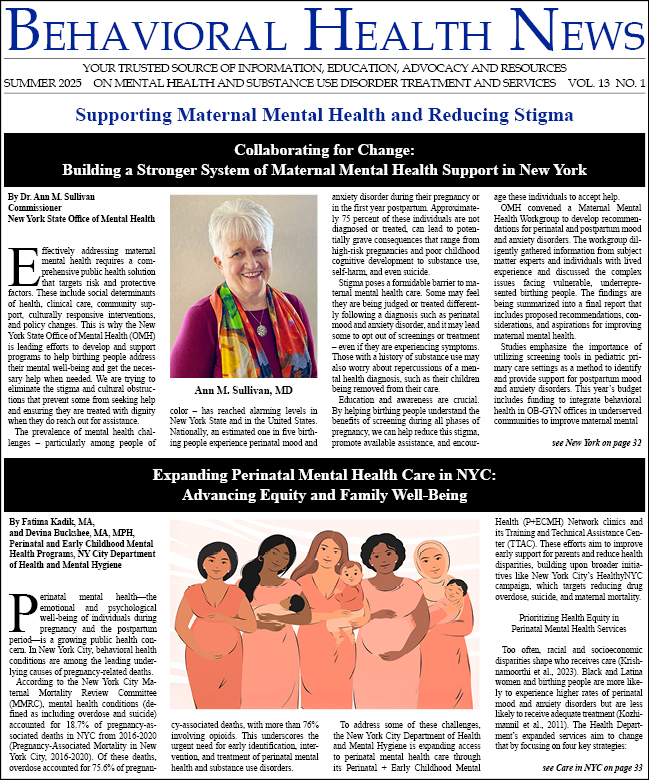-
The NYSPA Parity Enforcement Project: New Tools for Patients and Providers in The Fight Against Parity
The passage of the federal Mental Health Parity and Addiction Equity Act of 2008 (MHPAEA) represented a landmark moment for those fighting for parity in behavioral health benefits. In the years since MHPAEA and its implementing regulations went into effect, many of the financial restrictions and...
-
Super Storm Sandy is Over but the Problems Are Not: A Creative Community-Based Integrated Health Care Initiative
The Staten Island Mental Health Society, Inc. (SIMHS as lead agency) and Community Health Action of Staten Island (CHASI) partnered, in April 2014, to form a Mobile Integrated Health Team (MIHT) to provide in-home health and mental health services to Staten Island residents still suffering the...
-
Opportunities for Improved Services with Integrated Care
The key component of integrated care – coordination of primary and behavioral health services in a way that is accessible from one place – is not a new concept for many substance abuse treatment organizations, such as Odyssey House in New York City, that operate Article 28 licensed medical and...
-
Integrated Care Supports a Whole-Person Approach to Improved Health Outcomes
About one in six adults will experience a mental health illness and medical condition within a year ― and among those receiving Medicaid, the percentage is likely higher.1 Since medical and behavioral health conditions tend to overlap, research shows that the most effective way to treat this...
-
Trauma-Informed Care Leads to More Integrated Care
Our inattention to the emotional dimensions of health and illness is a public health perfect storm, especially for the mentally ill. This group of people experiences high rates of illness, suffers greatly, uses an enormous amount of our precious healthcare dollars, and dies 25 years earlier than...
-
Integration on a Continuum: Models for Integrating Behavioral Health and Primary Health Care
In the recent years of Medicaid Redesign in New York State, community-based mental health agencies who serve persons with serious and complex psychiatric conditions have addressed the evolving transformation of health care in a variety of ways. Much of the response has been reactive, with agencies...
-
An Integrated Model of Care and Education: Wellspring and the Arch Bridge School
Residential Treatment” has been under assault for some time, as you may know. Critics have made claims about its shortcomings, many of which are absolutely true. But residential treatment is not just one model. There have been several models available to families that have been successful, time...
-
BHN Fall 2015 Issue
"Exploring New Models of Integrated Care” Articles in This...
-
Ensuring Evidence-Based Treatment for Substance Use Disorders
The use of heroin, other opiates, and inappropriate prescription drugs are currently a major public health problem in this country. According to the Centers for Disease Control and Prevention (CDC), national death rates from prescription opioid pain reliever overdoses quadrupled during 1999 to...
-
From Collaboration to Collective Impact: A Community Approach to Tackle Youth Opioid Abuse on Staten Island
No single organization, however innovative or powerful, alone can address youth substance abuse in a community. A dedicated group of community members, philanthropists, behavioral health providers, law enforcement, government partners, and parents, understood this and came together to collectively...






